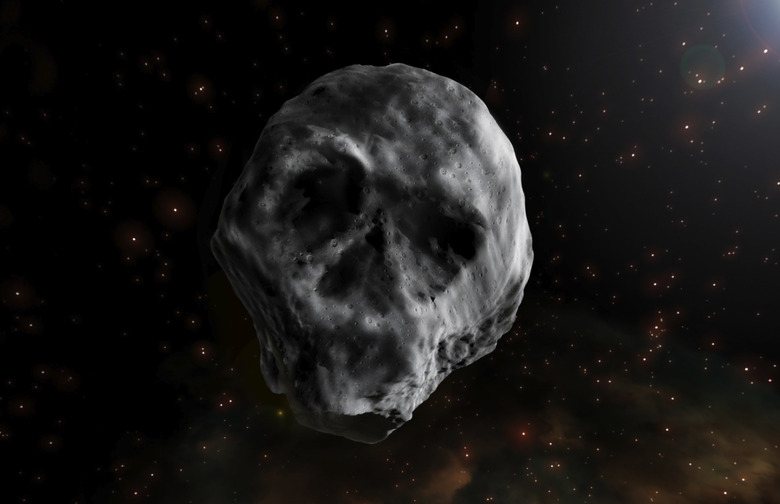Incredibly Creepy Skull-Shaped Asteroid Is Going To Cruise By Earth Next Year
Giant rocks hurtling through space are probably scary enough all on their own, but when one of them looks like a human skull, well, that's just downright unsettling. Asteroid 2015 TB145 first cruised by our planet in 2015, but the creepy space rock is headed back towards us for another visit, and scientists are keeping a very close eye on it.
The object, which has been dubbed the "Halloween asteroid" — thanks to the timing of its visit in October of 2015 as well as its unusual shape — measures around 700 meters wide and is somewhat oblong in shape. At the moment, astronomers forecast that its next flyby will occur in November of 2018, and they're eager to learn more about the peculiar visitor.
During its most recent pass, radar images captured by the National Science Foundation's Arecibo Observatory revealed the asteroid's skull-like appearance. Subsequent renderings (like the one above) have given the object legendary status among observers, but at the end of the day it's still just one of many near-Earth asteroids that slip by our planet from time to time.
When it flies past Earth in 2018 it will do so at a safe distance of around 105 lunar distances, which is the distance between the Earth and our moon. However, things will get more interesting in the not-so-distant future. A new study of the asteroid and its trajectory was recently published in the journal Astronomy & Astrophysics.
"The next slightly more exciting encounter will be around Halloween's day in the year 2088, when the object approaches Earth to a distance of about 20 lunar distances," Thomas Müller of the Max Planck Institute in Germany, lead author of the recent study, explains. "The encounter on Halloween's day 2015 was the closest approach of an object of that size since 2006."
As for its origins, it's thought that the asteroid might actually be an extremely old comet which has since run dry of its icy shell, leaving just a battered hunk of rock behind. Astronomers were able to observe the object in impressive detail in 2015, but it seems as though they'll need to wait until closer to the end of the century before getting another good look at it.
